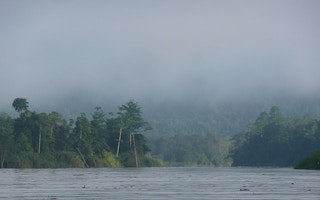Scientists and conservationists have long argued that, given the vast amount of degraded forestland in the tropics, large-scale and long-term restoration efforts are urgently needed, not just to help reverse historical trends of global deforestation but also to mitigate climate change and meet human development needs.
Planting trees remains a major focus of reforestation programs, but researchers are now making the case that harnessing the potential of natural regeneration, which often goes ignored as a land-use option, can play a key role in achieving the goals of tropical forest restoration initiatives.
Biotropica, the journal of the Association for Tropical Biology and Conservation, published a special issue in late November dedicated to exploring the natural regeneration of forests and other large landscapes in the tropics.
Earth’s tropical forests harbor the majority of the world’s biodiversity, help regulate the global climate, perform vital ecosystem services, and provide the livelihoods of more than 500 million forest-dependent people worldwide, note Robin Chazdon of the University of Connecticut and María Uriarte of Columbia University in New York, co-authors of a synthesis study that summarises the findings of the 16 studies appearing in the special issue of Biotropica.
“
Land degradation leads to food insecurity, high pest pressure, biodiversity loss, reduced availability of clean water, depleted soils, and increased vulnerability to climate and market shocks for the human populations.
Robin Chazdon, University of Connecticut and María Uriarte, Columbia University in New York
More than 50 of the original extent of the world’s tropical forests has been cleared, while the area of degraded old-growth and second-growth forests in the tropics is estimated at 850 million hectares (about 2.1 billion acres), Chazdon and Uriarte add. Some 350 million hectares (7.4 million acres) of that degraded land can no longer even be classified as forest.
“Land degradation leads to food insecurity, high pest pressure, biodiversity loss, reduced availability of clean water, depleted soils, and increased vulnerability to climate and market shocks for the human populations that inhabit and depend on forested landscapes for their livelihood,” the researchers write.
But while the more than one billion hectares of degraded forest and woodlands across the tropics provide opportunities for various forms of restoration, natural regeneration is often overlooked as an option, Chazdon and Uriarte argue.
“The majority of this area is suited for mosaic landscape restoration in which primary and second growth forests and on-farm trees are combined with other land uses, including agroforestry, plantations, smallholder agriculture, and human settlements,” they write.
“Given that restoration opportunities exist primarily within these multifunctional landscapes, implementing low-cost natural regeneration will require planning instruments and policy reforms and initiatives that allow scaling-up to the national and regional level.”
Chazdon and Uriarte assembled the 16 original papers to provide an overview of the role natural generation, a relatively new approach to restoring forests and a low-cost alternative to tree planting, can play in forest and landscape restoration (FLR) programs.
FLR aims to reestablish ecological integrity and enhance human well-being in deforested or degraded forest landscapes. The papers explore in-depth how spontaneous (passive) and assisted natural regeneration can help achieve the myriad social and ecological goals of FLR programs, but also reveal a number of ecological, environmental, and social factors that must be considered when using natural regeneration.
The many benefits of natural forest regeneration are catalogued by Chazdon and Uriarte: “Native species reassemble on their own or with some assistance, and rapid biomass growth is achieved by local species adapted to the site. Restoration methods based on natural regeneration also provide low-cost opportunities for conserving biodiversity and species interactions, sequestering carbon, and protecting soils and watersheds.”
But incorporating natural regeneration in FLR programs requires identifying formerly forested areas with high potential for self-recovery, as well as a clear understanding of the social and ecological costs and benefits of natural regeneration. “Governance structures, legal frameworks, and policies that foster human capacities to create, manage, monitor, and benefit from FLR activities and outcomes must also be developed,” they write.
The studies assembled in the Biotropical special issue identify major gaps in our knowledge when it comes to natural regeneration as a means of achieving FLR targets, and point to the need for new lines of research that are necessary to roll out natural regeneration programs on a widespread basis.
Chazdon and Uriarte identified six general research questions that emerged from the studies, which they propose as a “research agenda to harness the potential of natural regeneration in FLR.”
This story was published with permission from Mongabay.com. Read the full story.










